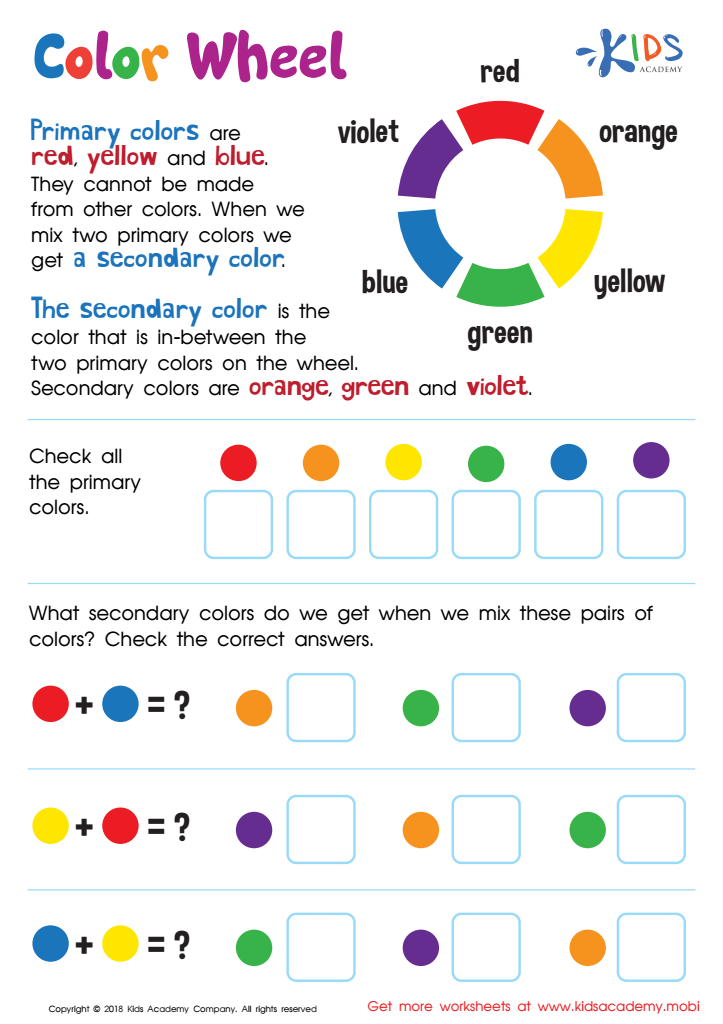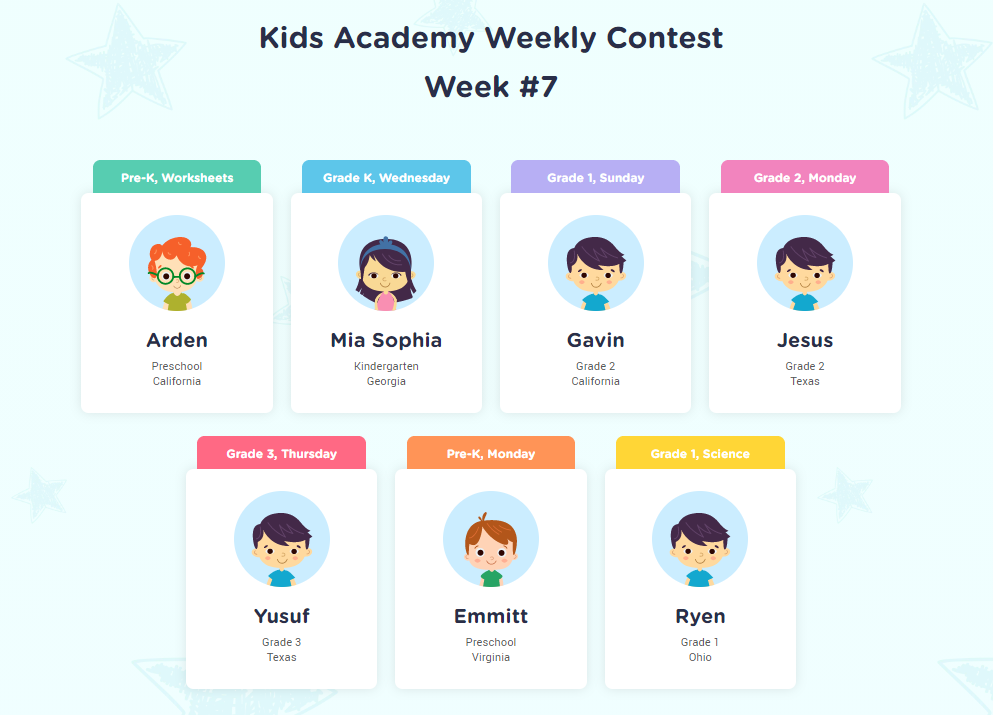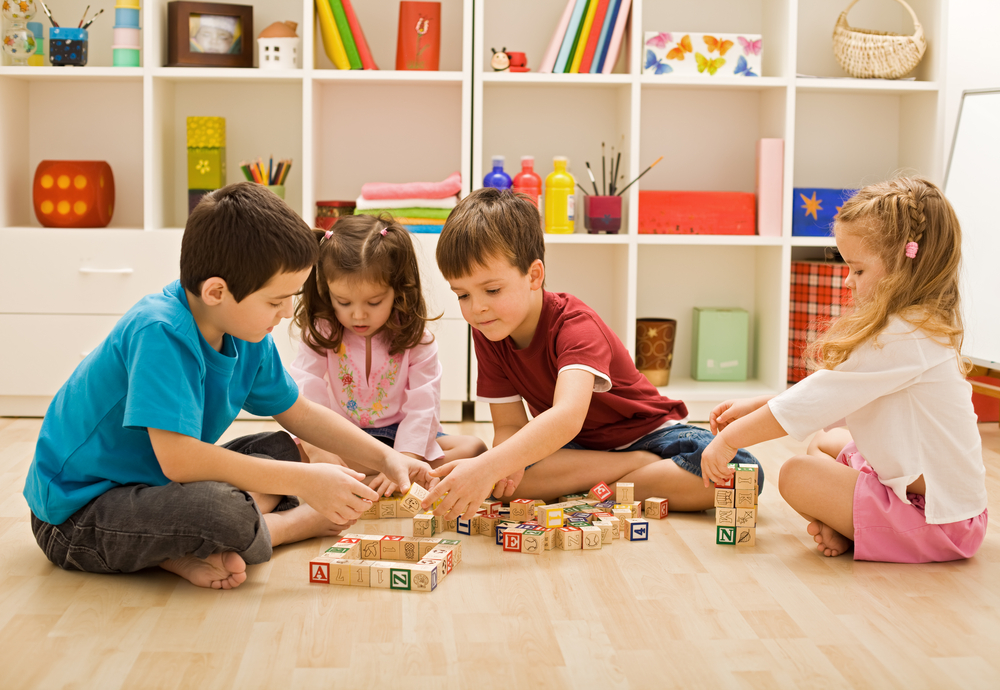Recognizing secondary colors Worksheets for Kids
1 filtered results
-
From - To


Primary and Secondary Colors Worksheet
Question/Answer
What does the Recognizing secondary colors skill mean when it comes to Grade 3 Physical Science learning?
The "Recognizing secondary colors" skill in Grade 3 Physical Science learning involves understanding how primary colors (red, blue, and yellow) can be mixed to create secondary colors (orange, green, and violet). It helps students grasp basic concepts of light and color, teaching them the principles of color mixing and the relationships between different colors.
What are some effective activities to train students’ Recognizing secondary colors skill when teaching them about Physical Science?
To train students in recognizing secondary colors in Physical Science, effective activities include color mixing experiments using primary color paints, interactive digital color wheel exercises, and hands-on activities like creating secondary colors with color filters or light sources. Engaging in art projects that require the blending of primary colors to achieve secondary ones is also a practical and enjoyable approach.
How to train the Recognizing secondary colors skill in Grade 3 students learning about Physical Science?
To train Grade 3 students in recognizing secondary colors, engage them in hands-on mixing activities using primary colors (red, blue, yellow). Provide paint, color wheels, and mixing charts. Guide them to mix primary colors in equal parts to create secondary colors (green, orange, purple), reinforcing the concept through visual and tactile experiences, and use interactive quizzes for assessment.
 Assign to the classroom
Assign to the classroom

.jpg)










